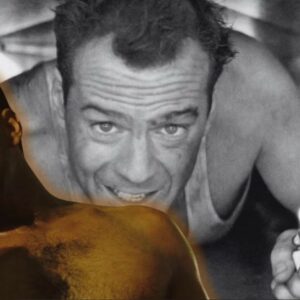Mary J. Blige is widely regarded as one of the most influential artists in the history of music. A global icon known for her distinctive voice, emotional depth, and genre-blending style, Blige has not only defined R&B but has also paved the way for many artists who followed. With nine Grammy Awards, dozens of chart-topping hits, and a career spanning over three decades, Blige’s success story is well-known. However, the true foundation of her career lies not just in her talent but in her early life and education—specifically, how her background, environment, and the people around her shaped her musical journey.
In this article, we will explore how Mary J. Blige’s early life in the Bronx, her familial influences, and her unconventional educational path contributed to her development as an artist. Through resilience, community support, and the power of music, Blige’s formative years played a crucial role in crafting the icon we know today.
1. Early Life in the Bronx
Mary J. Blige was born on January 11, 1971, in the borough of the Bronx, New York City. Known for its urban landscape and complex social fabric, the Bronx was an environment that often posed challenges for its residents. Growing up in the 1970s and 1980s, Blige faced many hardships that shaped her worldview. The area was, and still is, one of New York’s poorest neighborhoods, with high crime rates, economic struggles, and a reputation for being tough.
However, it was within this difficult environment that Blige learned early on the value of resilience, determination, and survival. The Bronx was not only the cradle of hip-hop culture, but it was also a place where music became a refuge for many young people. Blige herself often speaks about the sense of hope and community that came from the music around her—whether it was the gospel hymns of her church, the soul music that filled her home, or the burgeoning hip-hop scene on the streets.
From a young age, Blige demonstrated a natural inclination for singing. While she was immersed in the hard realities of life in the Bronx, music was her escape, a space where she could express herself freely and tap into her emotions. In the Bronx, she was surrounded by a rich cultural tapestry that exposed her to various musical genres, laying the groundwork for her diverse musical palette. It was in this environment that Blige developed a deep passion for music—a passion that would later turn into her life’s work.
2. Influence of Family and Community
Blige’s family was a crucial pillar in her upbringing, and the lessons learned from her close-knit family profoundly impacted her artistic journey. Her mother, Cora, played a particularly pivotal role in nurturing Mary’s love of music. Cora was not just a mother but a musical influence in her own right, instilling in Blige an appreciation for the power of song. Cora’s connection to music and her determination to provide a better life for her children in a challenging environment was something that Mary deeply admired.
Blige’s extended family, including her grandmother and uncle, also had a profound impact on her development. They provided emotional support, and their encouragement helped Blige remain focused on her musical ambitions. Family was a constant source of comfort and motivation in Blige’s life, especially during times when she faced obstacles. These familial bonds, forged in the tough streets of the Bronx, helped her cultivate a sense of perseverance and emotional resilience that would become hallmarks of her music.
Moreover, the community in which Blige grew up provided a source of inspiration. In the Bronx, music was a communal experience, and its influence was felt throughout the streets, houses, and churches. The sounds of R&B, soul, and gospel filled the air. These were not just musical genres to Blige; they were the building blocks of her artistic identity. The collective love for music in her neighborhood influenced her ability to relate to audiences from all walks of life, allowing her to connect with the struggles, triumphs, and hopes of everyday people.
3. Education and the Power of Music
Mary J. Blige’s formal education path was far from conventional. She attended Roosevelt High School in the Bronx but dropped out to focus on her music career—a decision that could have easily derailed her future, but instead, it propelled her into the music industry. This decision reflects one of the key themes of her story: while traditional education was important, music became her true teacher.
Blige’s educational background was marked by a blend of both formal and informal learning experiences. She was never one to conform to the traditional classroom setting, but that did not mean she neglected the pursuit of knowledge. Rather than following a standard academic route, Blige’s education came through life experience and the people she encountered along the way. She didn’t need a classroom to learn; she learned through her involvement in music, her experiences in the world, and the mentorship she received from industry veterans.
Throughout her career, Blige has credited the lessons she learned from the streets, from the music that shaped her youth, and from the guidance of mentors as some of the most important aspects of her education. Her songwriting reflects this unconventional form of education—blending the rawness of her personal experiences with the wisdom she gained from the music around her. This process, driven by personal growth rather than institutionalized learning, gave Blige the ability to craft deeply emotional lyrics and produce music that resonates with a wide audience.
Her education was also shaped by her interactions with other influential artists. She would often listen to and learn from artists like Aretha Franklin, Patti LaBelle, and Stevie Wonder—musicians whose impact transcended generations. These artists not only shaped her vocal style but also influenced her approach to writing lyrics. The way they conveyed emotion through music was something Blige absorbed and, over time, made her own.
Moreover, Blige’s exposure to the burgeoning hip-hop culture of the Bronx further enriched her musical education. Hip-hop, with its roots in storytelling, rhythm, and social consciousness, contributed to her distinctive style—a fusion of soul, R&B, and hip-hop. This blending of genres would come to define her sound, combining the depth of classic soul with the contemporary edge of rap and hip-hop lyricism.
4. Early Influences and the Development of Her Sound
From the very beginning, Blige was influenced by the legends of soul music, particularly Aretha Franklin, whose powerful voice and emotional delivery had a profound effect on her. Franklin’s gospel-infused R&B style became a cornerstone of Blige’s vocal approach. Alongside Franklin, Patti LaBelle’s powerful and dramatic singing style left a lasting impression, with Blige often drawing comparisons to LaBelle’s ability to convey deep emotion through song.
However, Blige’s influences didn’t stop at R&B and soul. The Bronx was also home to the burgeoning hip-hop scene, and Blige was an avid listener of early hip-hop artists. This led to her development of a sound that was at once soulful and street-smart. Blige’s music often speaks to themes of love, heartbreak, and resilience—subjects that are common in R&B and soul music but are presented with the boldness and rawness of hip-hop.
This fusion of R&B, soul, and hip-hop would become Blige’s signature style. The deep emotional honesty in her lyrics, combined with her powerful voice and unflinching vulnerability, created a sound that resonated with audiences across different musical genres. This combination made her a unique artist whose work transcended any one style or category, allowing her to create music that was universally relatable.
5. Her Breakthrough and the Start of Her Career
Mary J. Blige’s breakthrough came in 1992 when she recorded a demo tape at a local recording studio. This demo tape eventually found its way to Uptown Records, where she was discovered by producer Sean “Puffy” Combs. It was this discovery that launched Blige’s career, beginning with her debut album, What’s the 411? in 1992.
The album was a commercial and critical success, showcasing Blige’s powerful vocals, raw emotion, and genre-defying sound. The success of What’s the 411? was built on the foundation of Blige’s early life and influences. The music she created resonated with listeners because it spoke to their experiences, their emotions, and their struggles. It was authentic and grounded in the same struggles Blige had faced growing up in the Bronx.
From there, Blige’s career continued to skyrocket, earning her widespread recognition and paving the way for an era of new music that mixed R&B with hip-hop, establishing her as one of the genre’s most influential figures.
Conclusion: The Education of an Icon
Mary J. Blige’s journey from the streets of the Bronx to the global stage is a testament to the power of resilience, the value of life experiences, and the impact of the right influences. Her educational path, though unconventional, was shaped by her environment, her family, and her immersion in the rich musical culture of the Bronx. These factors combined to nurture her artistic vision and help her become one of the most iconic figures in contemporary music.
Blige’s story is a reminder that education is not confined to traditional paths. Sometimes, the most important lessons come from the world around us—through our families, communities, and the passions that drive us. Mary J. Blige is not only a product of her upbringing but a force that has redefined what it means to be an artist in today’s world.





